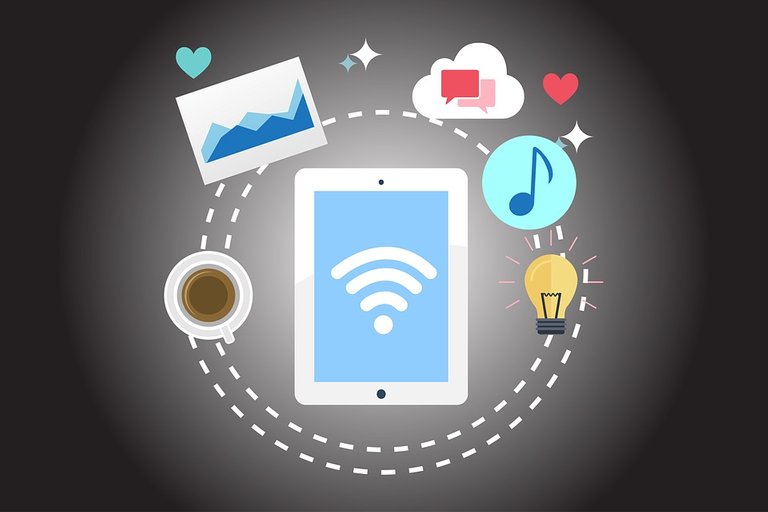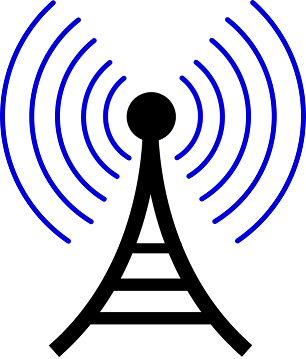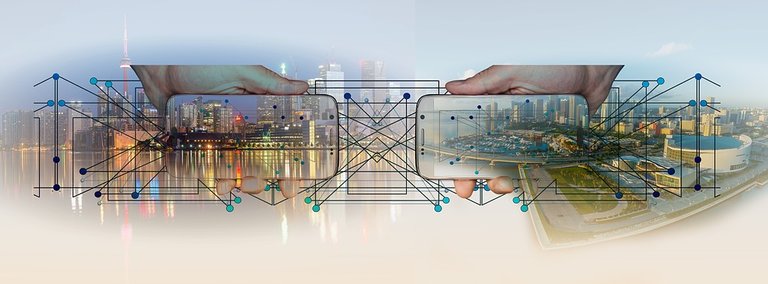Hi, Wonderful Steemians, its always really good to see knowledge at its peak here in this community especially the steemstem community, it’s one of the major things that gives me the drive to keep learning and developing my knowledge to deliver a simplified form of knowledge to demystify the engineering field as much as possible.
Having said that let’s get down to business

Network from pixabay under CCO Licence
We don’t need to talk about the importance of communication technology however it is important to note that communication has principles via which it is laid on, any form of communication including even physical speech communication also follows these principles in particular measures.
THE PROCESS OF COMMUNICATION

Image designed by me @lawkay
When communication takes place, the following process takes place; this process might take place in milliseconds, in fact in most cases does. As illustrated above every form of communnication begins from;
• Generation of the message signal: Generally speaking, a signal is essentially the real format which carries the particular message to be communicated e.g. (Text, Voice, Picture, Audio, Electronic signals)
This that you are reading is in text format, also embedded are picture format, in some cases you will also see videos, whatever the format, the point is that message is being transmitted from one end to another.
• The second phase of this process is to give a description to the signal generated, the description of the signal is in a set of symbols, describing via symbols must be done in accurate precision, so that the symbols would be a direct derivative of the original message e.g. (electrical or visual). Do you know that when you type a text on your computer, it is translated into electrical symbols which is interpreted by the computer and given an output on the screen, the electrical signals are the language the computer understand, hence we describe the message you understand (English text) by the message the computer understands (Electrical signals; essentially 1’s and 0’s).
• The third phase is known as the encoding phase which involves encoding the describes signal (symbols) in a form that is suitable for transmission. When I speak to you, the transmission channel of my voice is the air, but sound cannot travel for long in air, so using a telephone network to transmit sound to farther channel requires the usage of other transmission mediums needed for it, sound in itself therefore has to be encoded in such a way that the new transmission medium will be able to transmit it through the required medium.
• Then we move on to transmitting the previously encoded symbols to the desired destination
• At this destination, there is a receiver whose job is to decode the transmitted message into the original symbol
• Then there is a regeneration of the original message from the symbols decoded, however the original message would have undergone a measure of degradation due to transmission; in fact, you would agree with me that when 2 people are engaging in a dialogue, there seems to be a difference between what one is saying and what the other is hearing, do you relate?
COGENT ELEMENT IN COMMUNICATION NETWORKS
As said earlier principles discussed in this post forms the basis of communications and therefore doesn’t depend on whatever form of communication is being used it finds application therein. In communications one basic element you will find there is the.
Transmitter
Receiver
Transmission channel

Flowchart image attributed under Creative commons 2.5
The transmitter is located at one point (usually the source of the signal) the receiver is located at another point. The channel therefore is the connecting medium between both transmitter and receiver.
As discussed under the process of communications, encoding of signals is carried out in order to transform the signal into a transmittable form, the transmitter is the element responsible for this process in the communication network. As also discussed, as the signal is propagated along the transmission channel, there exist a kind of distortion on that line, due to the imperfections of the channel, for there to be an effective communication therefore, there must be a means to correct to a high degree the quality of the message being transmitted, and this correction is carried out by the receiver. Not only that the signal also transforms the signal back to the original form through which the message was intended to be passed.
Let’s take a cue from human communication, when two people are engaging in a physical dialogue, say Mr. A and Mr. B. When Mr. A speaks to Mr. B. The Source is majorly in the mind of Mr. A, but the source cannot be communicated without the interplay of communication networks, So Mr. A must therefore Encode (in his brain acting as the transmitter) the source of the information (Mind) into any Language (English French, Spanish etc.) this passes through from his mouth through to communication channels, “air” as we know sound travels in air and attenuates via distance and other factors. Therefore, on reaching Mr. B it enters in through his ear too his brain (Receiver) the brain then decodes the encoded language and understanding comes, when understanding comes it enters into his mind. And therefore communication takes place.
Simple process right It goes the same way with computers especially since the advent of electromagnetic theory which gives room for communication signals to travel through large distances at the speed of light.
COMMUNICATION MODALTIES.
During communication, it is either possible I want to speak to a large audience of people or I want to speak to just one person, there are therefore two major modalities a communication system might take which is
Broadcasting
Point to point communication.
Before proceeding, we need to understand first that everything found in a communication network is either a transmitter, receiver and a channel, many at times it is possible to have a transmitter serving as a receiver and vice-versa e.g., your mobile phone serves as transmitter when you speak, and as a receiver when you listen. All this through the propagation of electromagnetic waves.

Broadcasting simply involves the use of a single transmitter and numerous receivers, a proper example of this is in radio broadcast or Television broad cast, once signal Is transmitted, all other connected receivers receives the signal. Also when you attend conferences and the speaker attempts to communicate to a large audience. The advantage of this type of network is that the network is inexpensive to build

Mobile phone as a point to point network under CCO license
The point to point communication system is quite more specific, it involves one transmitter connected to a specific receiver, in this network, there is a two-way flow of information carrying signals a perfect example of this is in telephone links and an Earth Station controlling a robot in space.
RESOURCES IN COMMUNICATION NETWORKS
While trying to transmit signal from one point to another, there are certain quantities parameters to be taken to consideration to achieve maximal results, these parameters are
Transmitted Power
Channel Bandwidth.
The volume of information to be transmitted per time is known as the transmission power and the frequency range allocated for certain transmission is known as channel bandwidth, in a radio broadcasting station, each local station transmits radio waves at certain frequency range, when tuned into that frequency range, you can listen to whatever information is being transmitted from your receiver.
In designing a communication network, it is therefore an objective to use this resources as effectively as possible. On this basis, communication channels can be either classified as band limited or power limited channel. Depending on the use or application, broadcast mediums might require more power than bandwidth, but point to point might require more bandwidth than transmission power because of the specific nature of the communication network.
SOURCES OF INFORMATION
Finally, we would talk about the sources or formats via which communication signals can be generated. Basically t,he source of an information is represented in terms of the signal that carries the information.
A signal can be
- One dimensional as in ( Speech, audio or electronic levels. A one-way signal)
- Two dimensional as in (pictures x, y coordinates in pixels)
- Three dimensional as in (Videos; x, y ,z).
CONCLUSION
This signals as said earlier are transmitted across communication channels, and this channels can allow for a guided propagation e.g. Telephone links, that is why when you dial a number the communication is secured. There also exists a possibility for a free propagation communication channel as in a wireless broadcast channels, radio broadcast channels etc.
REFERENCES
To deepen your knowledge on the above subject matter, you might also want to read
https://en.wikipedia.org/wiki/Broadcasting
https://www.eecs.tufts.edu/~dsculley/tutorial/logic/logic9.html
If you write STEM (Science, Technology, Engineering, and Mathematics) related posts, consider joining #steemSTEM on steemit chat or discord here. If you are from Nigeria, you may want to include the #stemng tag in your post. You can visit this blog by @stemng for more details.

This is an insightful post on communication systems.
I've updated my knowledge on the topic. Nice one bro.
Communication is vital to every man